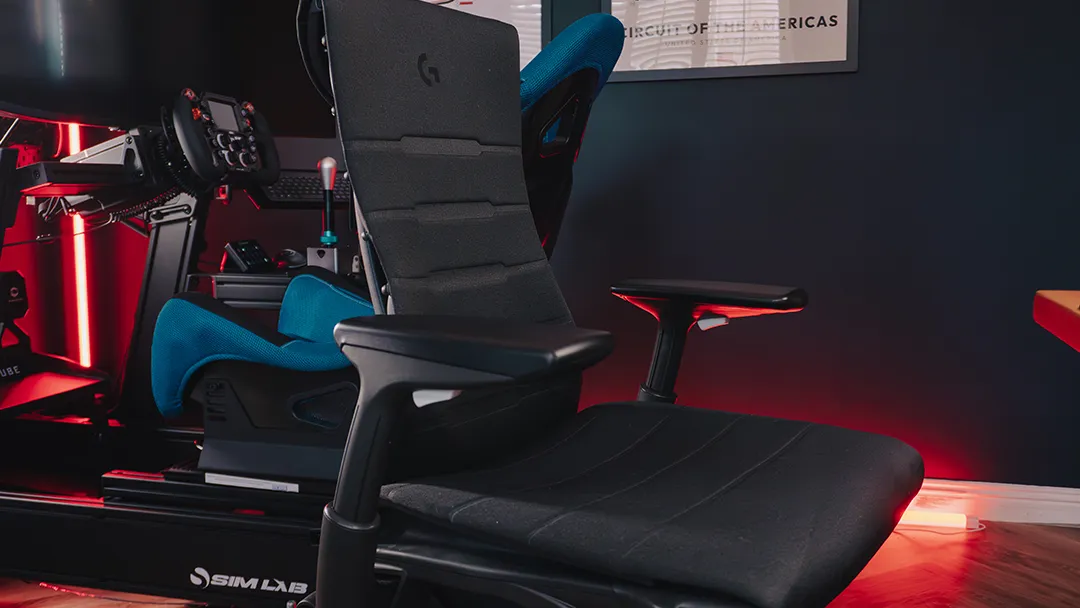
Herman Miller Embody Gaming Chair
When you’re spending hours sitting at a desk, either working or gaming, the last thing you… Read More »Herman Miller Embody Gaming Chair
All Reviews » MOZA R25 Ultra
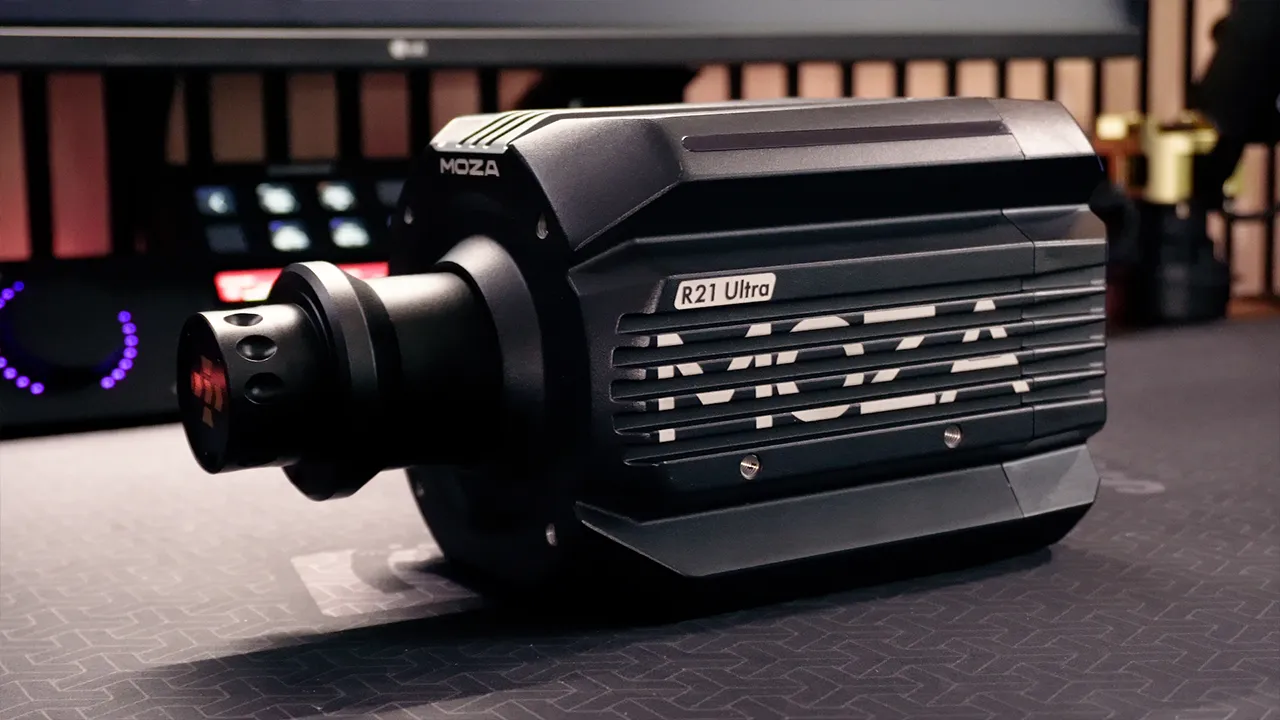
Disclaimer: Some of the links on this page may be affiliate links. We earn a commission from any sale after clicking an affiliate link. Find out more.
8.7/10
9.3/10
8.6/10
8.9/10
Below is our complete video review of the MOZA R25 Ultra, where I discuss everything in this written review, and bring you gameplay of this Wheel Base.
MOZA first ever wheel bases, the R16 and R21 have been around for a good few years now, meaning it’s time for a good overhaul. The R21 Ultra and R25 Ultra look to completely replace the two oldest MOZA wheel bases. And the specs they are introducing look set to challenge some of the most premium direct drive wheel bases currently available.
These two new MOZA Racing wheel bases introduce zero cogging technology, a completely new direct drive motor and an aluminium casing with RGB lights. These are some big swings at other sim racing giants such as Asetek, Fanatec and Simucube. But do they land? In this review, I put the new generation of MOZA Racing wheels to the test to find out.
Let’s kick things off with an overview of what the two new MOZA wheel bases are offering. Both the R21 and R25 Ultra are complete redesigns compared to the older wheels that they are replacing. Everything inside is entirely new, as is the design.
With these wheels, MOZA has really upped their game. Up until now, the Chinese brand has focused on dominating the budget and mid-range sim racing market, with the premium wheel base sector sort of forgotten about. This is exactly where these two wheels slot in.
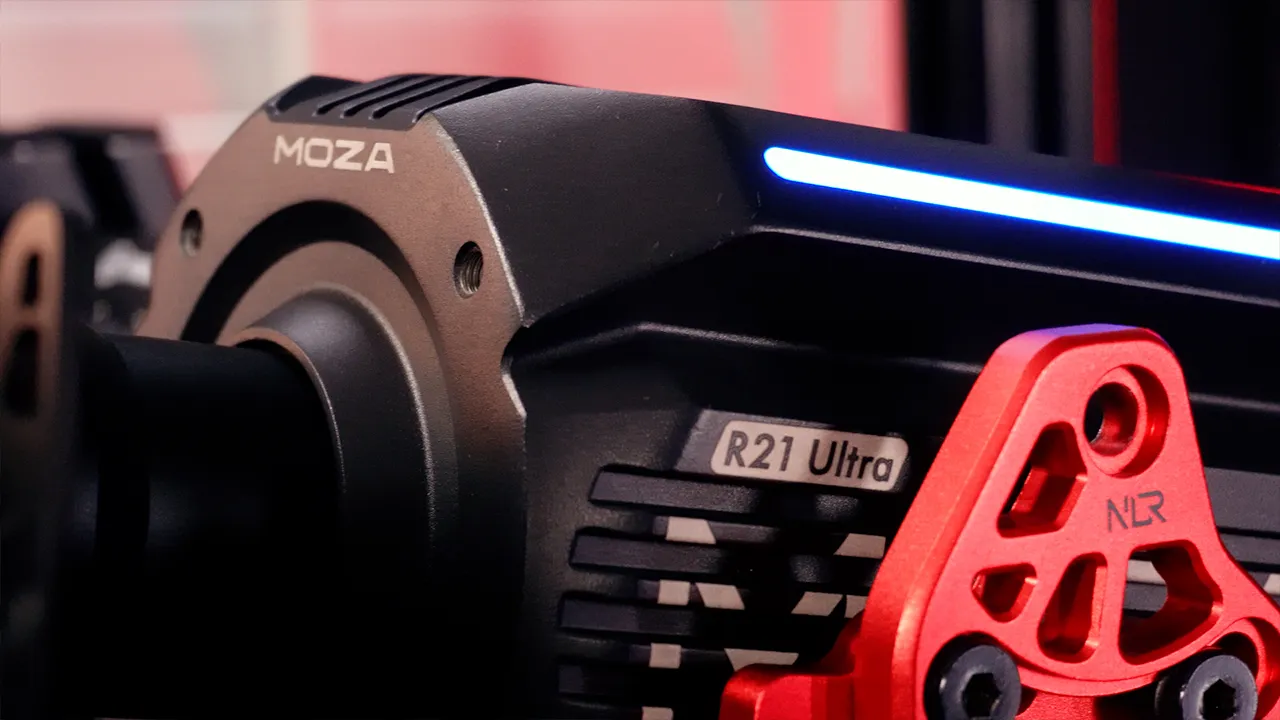
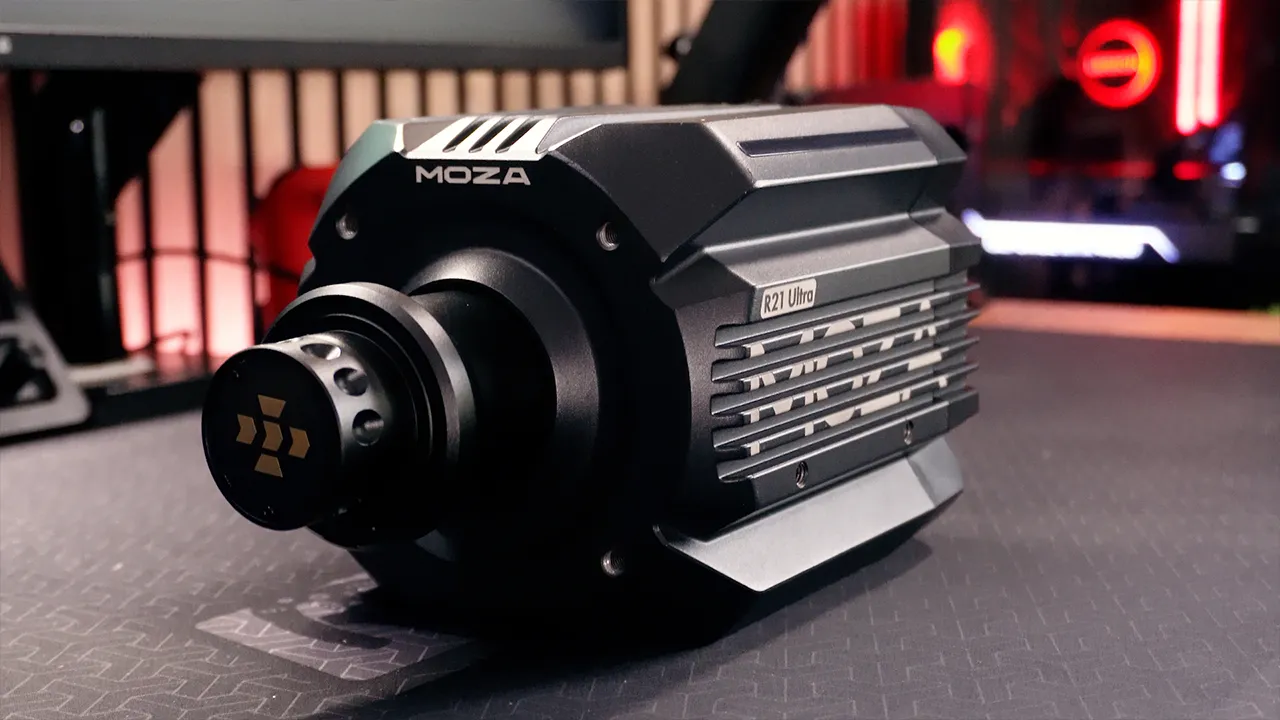

To start, these wheelbases offer a huge improvement in tech. The internal motor is completely new, and this is the heart of this new wheel. The flat-wire motor offers zero-cogging, which basically means the motor shaft is incredibly smooth to rotate. Older wheel bases tended to jump, meaning it could feel like the wheel was turning in 5-10° intervals. This new R21 and R25 Ultra removes that, resulting in a much smoother experience aswell as vastly improved accuracy.
Much like competitors such as Fanatec, MOZA are now boasting 21 or 25Nm sustained torque output, meaning less degradation during race sessions. There is also a 21-bit magnetic encoder, and like all new MOZA wheels, the R21 and R25 Ultra boasts a new force feedback algorithm.
These tech improvements, paired with the new CNC-machined aluminium casing design and snazzy RGB lights that look to have been ripped right out of an Asetek wheel, marks one of the biggest product updates in a while.
Now, do all of these improvements come at a cost? Well, yes, but compared to the two wheel bases they are replacing, MOZA has gone ultra-competitive.
The R21 Ultra costs $699, while the R25 Ultra will set you back $899. This is pretty crazy when you think that the much older R21 wheel base that was launched in 2021, cost $849 right up until it was discontinued.
That means that to replace it like for like with the new R21 Ultra, you’re actually saving $150. And to upgrade to the R25 Ultra, it’ll only cost you an additional $50 compared to the old R21.
| Product | Price |
|---|---|
| MOZA R21 Ultra DD wheel base | UK: £699 EU: €799 US: $699 |
| MOZA R25 Ultra DD wheel base | UK: £899 EU: €999 US: $899 |
In a world where a 15Nm Fanatec wheel base will set you back $1179.99, and a class-leading Simucube 2 Pro costs $1449. MOZA are really hitting hard on the competitive pricing front with these wheels both costing under $900.
Is this swing a big reality check for other sim racing brands, and does this pricing make the new Ultra wheel bases the best value for premium direct drive sim racing? Let’s jump into the unboxing and find out.
Starting with the unboxing, if you’ve ever had MOZA hardware, things are pretty standard. Inside the box, you’ll find a nice selection of stickers and the usual paper manual. Packaged snuggly inside the foam cutouts are the power brick and the USB data cable.
There are also a selection of mounting hardware, and finally the main attraction, the wheel base. Like all MOZA products, the base comes in a nice bag to protect from dust, and like most wheel bases, it also weighs a lot!
Once the wheel base is unsheathed from its bag, the new design language is instantly apparent. While I use the phrase new design language, there are actually a lot of similarities to older MOZA wheels, and competitors.
The grooves running down each side and across the top are evolutions of those found on the current crop of smaller wheel bases such as the R12. You then have the haunches found in each corner of the wheel base.

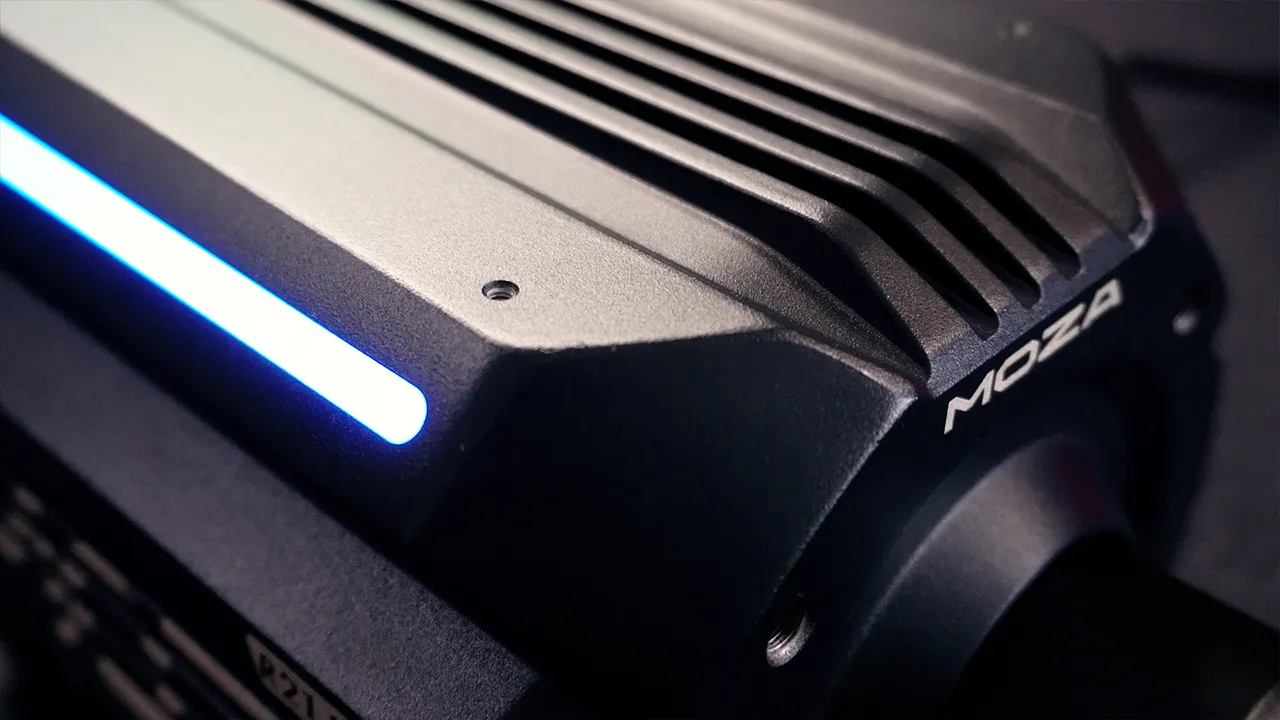
Now these look almost reminiscent of the flares found on the Clubsport DD bases from Fanatec. In fact, as a whole, remove the branding on the front and side, and this whole wheel looks like it could be a Fanatec product. I’m not going to say that is where MOZA drew inspiration, but the similarities are striking.
Build quality is excellent all round, with CNC-machined aluminium housing. This has its practical uses by ensuring the wheel remains rigid given the high torque demands. It also helps that when you’re spending this much on a wheel that it does have that premium finish to qualify your buying decision.
Finally, the big new addition to the design comes in the form of the two LED light strips across the top corners. These are new to MOZA, although not to direct drive wheel bases, as Asetek really pioneered these years ago, followed by Thrustmaster and SIMAGIC.
While the RGB lighting is fairly novel, and not something I’d prioritise when choosing a wheel base, this implementation is certainly better than recent attempts by other brands. both Thrustmaster and SIMAGIC almost hide their lighting behind the steering wheel, while MOZA and Asetek before them display it proudly across the top and sides.
MOZA has enabled these lights to also function as live telemetry, allowing you to configure them to flash during certain moments on track.
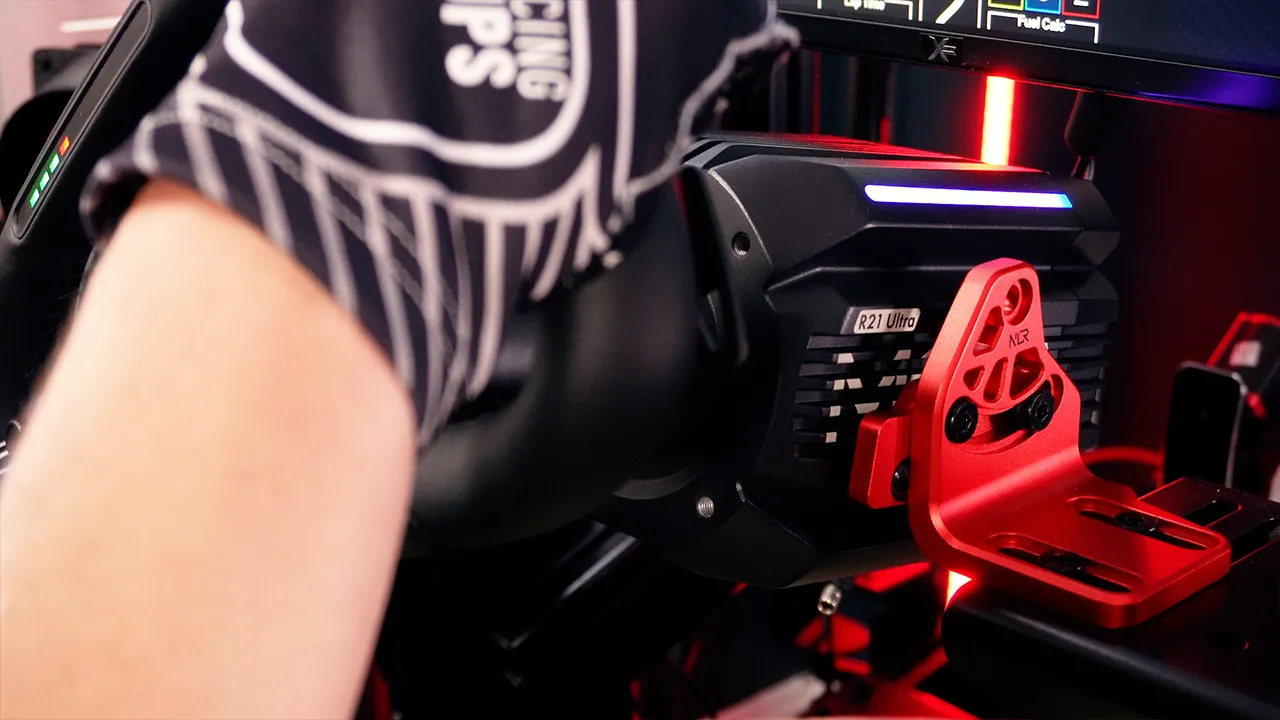
A wheel base sits at the heart of most sim racing setups, meaning you’ll often use it as a base to build off. Opting for a MOZA wheel base, could mean you’re more likely to purchase a MOZA shifter or pedal set. If this is your chosen route, then MOZA has you covered with a tonne of connectivity ports.
The rear of the base features ports for your pedals, dashboards, shifters and other accessories such as the E-Stop to connect to. This makes it ideal for cleaning up your cabling, and minimise the number of connections running to your PC. In effect, it acts as its own USB hub, which is nice to see.
At the front of the base, the quick release hasn’t changed much. It features a lot of the same characteristics as previous generation QRs, allowing for wireless connectivity and power to all current MOZA steering wheels. I won’t talk about it too much as I’ve mentioned it a lot in previous MOZA reviews, but the all round mechanism and ease of use is fantastic as always.
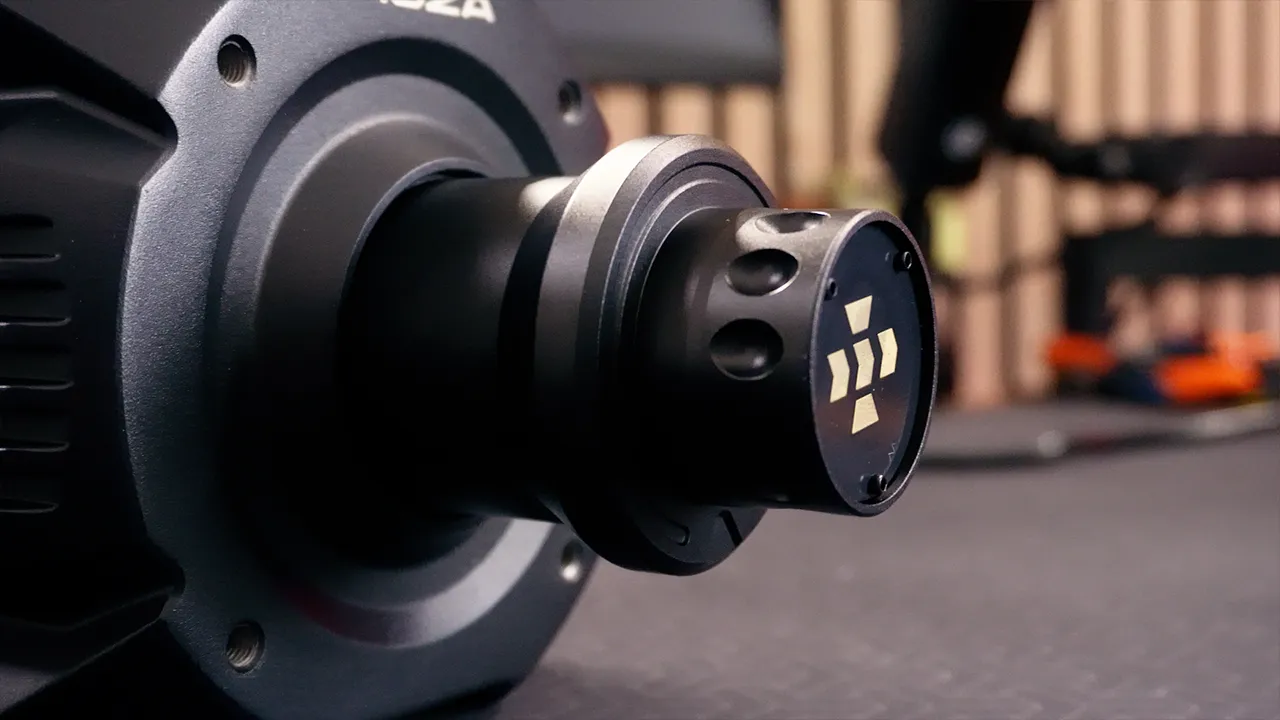
Other nice quality of life features include the multiple array of mounting options available. With previous generations of MOZA wheel bases, you’ve been limited to front and bottom mounting. The new R21 and R25 Ultra has both of those options like normal, but also introduces side mounting.
This is a really nice option, and as you can see, I like to opt for side or front mounting where possible. However, this is where my first sticking points came to fruition. While having these side mounts is good, they will almost certainly require dedicated MOZA brackets to function.
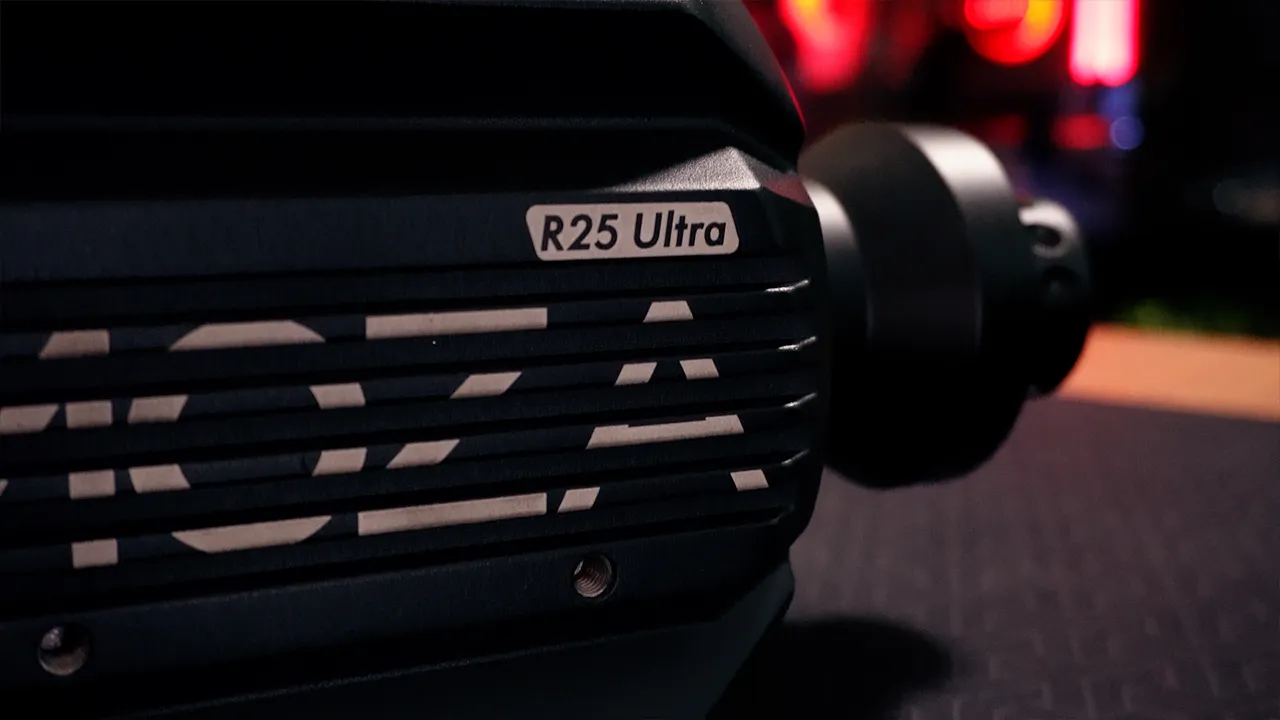
I have both a Sim-Lab and Next Level Racing rig, both with side and front mounting capabilities. However, natively, neither rig would actually fit the front or side mounting profile of my R21 Ultra.
The best I could do is absolutely force the Next Level Racing side mounts into the pre-drilled MOZA mounting holes. It turns out the pre-drilled holes are about 5mm too close together to naturally fit my NLR mounting bracket.
Having used a lot of force to make the brackets fit, I was left with a small gap either side of the base. And while it is secure and hasn’t pinged off or snapped anything during my month of testing this thing, it’s certainly less than ideal, and is a little sketchy.
Now, this thing is mounted to my sim rig, just about! It’s time to run through just how it performs on track. I have both the R21 Ultra and R25 Ultra, which outputs a maximum 21Nm of peak torque and 25Nm of peak torque respectively.
While not at the crazy levels of the older Simucube 2 Ultimate or Asetek Invicta, things are more than strong enough. I could have eased in my rather sketchy side mounting, but instead opted to go balls to the wall, and jump into Le Mans Ultimate with the force feedback maxed out.
Thankfully, my mounting held, and I was able to experience all of the hype right away. I do want to start by giving MOZA props where they’re due. This is one incredibly smooth wheel to sim race with. MOZA are boasting about their new zero-cogging technology, and this can certainly be felt during racing. Or rather, that cogging and modularity cannot be felt, which is a good thing.
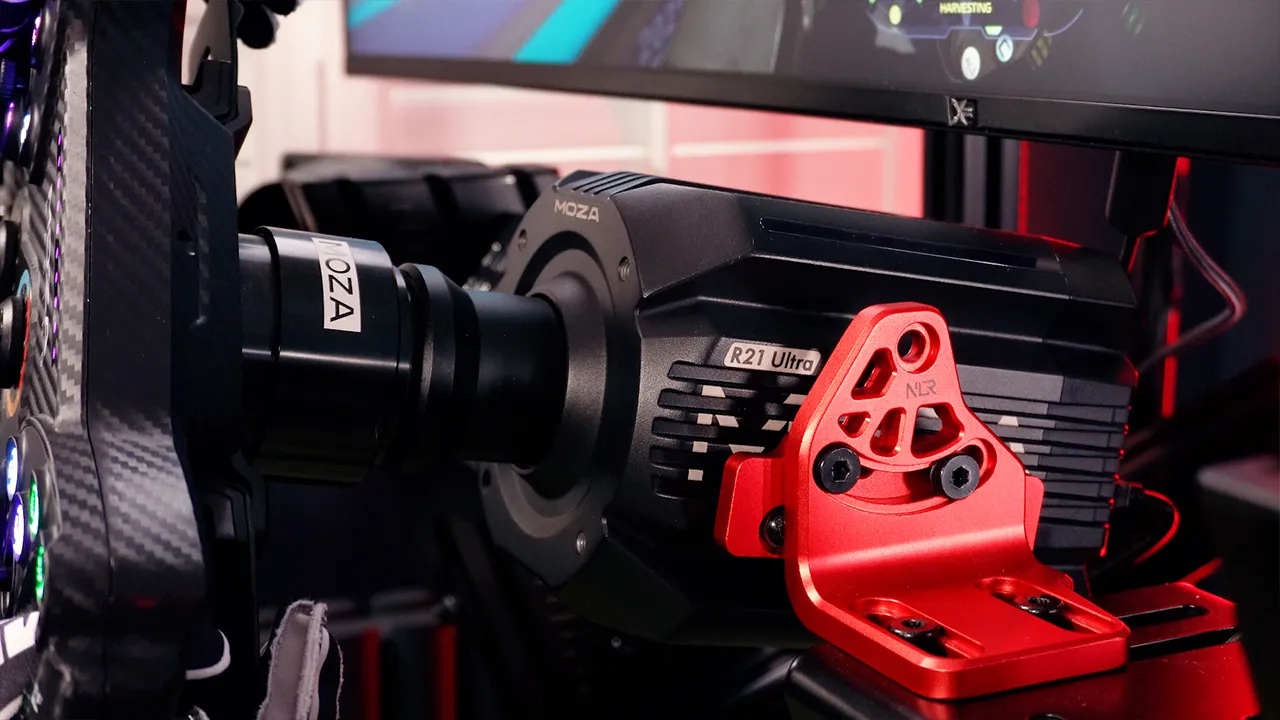
As you throw your car through corners, as I’m doing here in ACC, you can feel the weight build in the wheel as the car’s weight balance shifts. Thanks to the 21Nm of peak torque that I’m running with this R21 Ultra, you do still get a lot of strength and feedback when you hit a kerb.
Depending on where you set your max strength setting at, this can be pretty jarring, especially if you run the base at its full torque potential. A kerb strike can echo through your sim rig, vibrating right through the chassis and the seat. More subtle rumbles and track details also have this same effect, and almost feel like an underlying haptic motor module that is positioned around your cockpit. This goes a long way to really pushing the feeling of immersion, as well as the feedback you are feeling from your car.
The responsiveness with this new generation of wheel base is also impressive. With the R25 Ultra you get exclusive access to real-time torque sensing which promises a response frequency of up to 2kHz. As far as I’m aware, this technology isn’t included on the R21 Ultra that I’m testing, however, that doesn’t detract from what is a lightning fast response time.
During use, there is really very little noise, like literally zero noise. You don’t get any noise from the rotation of the steering wheel at all, and if you mute your game, you can barely hear the internal motor as the force feedback cranks up, with it only ever really being noticed in the sound of the vibrations from kerbs and other rumbles.
Heat buildup is also very well managed. Across a couple of hours of racing, the outer casing felt slightly warm at best. MOZA have integrated a very good thermal management system that monitors and regulates heat in real-time, and this comes to fruition across long race sessions.

When it comes to adjusting how the wheel feels, you get a huge amount of customisation within MOZA’s Pit House software. This free app allows you to change almost any part of your wheel and has always been one of the more in-depth sim racing softwares around, for better and worse.
This means you do get a lot of granular control over various aspects of your wheel, from the overall strength, to the damping both in general and at higher speeds, and various filters. For those that love to tinker, this level of adjustability is great. However, for sim racers who would much rather spend time on track than in the wheels settings, a lot of these sliders can be overwhelming. Thankfully there is a preset manager that lets you load a variety of official presets created for specific games.
I’m not going to take away from all the options that MOZA give you, however, my experience with Pit House over the years, does make me wish some of the options were explained and laid out a little clearer.
And that brings me to my final thoughts on this new generation of MOZA direct drive wheel, and this is actually a pretty big moment in sim racing. With brands such as Fanatec raising their wheel base prices, and therefore increasing the threshold for a sim racer to afford a premium wheel, MOZA has done an excellent job of lowering that bar right back down.


Having a 25Nm direct drive wheel available for under $1000, from such a prominent brand within sim racing is huge. MOZA went hard after the budget and mid-range market, and are now doing the same in the premium space.
The much improved exterior design, high build quality and great performance allows the R21 and R25 Ultra wheels to truly belong in the conversation when it comes to discussing premium wheels. There is still a little refinement that needs to happen before these wheels can truly take on the kings of premium sim racing, Simucube.
However, these two wheel bases deliver on their promise of feeling next generation thanks to a host of performance improvements. If you are considering upgrading to a high powered direct drive wheel base, both the R21 and R25 Ultra are incredibly good options to have.
The MOZA R25 Ultra delivers a big improvement in the force feedback feel compared to older MOZA wheel bases. The true performance doesn’t quite match the Simucube 2 Pro, however, the price tag is considerably lower, making the R25 Ultra a very attractive direct drive wheel.
The MOZA R25 Ultra is available to buy from October 2025 on the MOZARacing.com website.
No. Unfortunatly, both the R21 Ultra and R25 Ultra are both only PC compatible.
You can use the links below to shop for your favourite sim racing products, or for any products that we may have recommended. These links are affiliate links, and will earn us a small commission, with no additional cost for you.
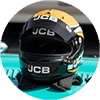
Rich is the founder, F1 car setup creator and content writer for SimRacingSetups. With over a decade of experience as a graphic designer, marketing director, competitive sim racer and avid motorsport fan, Rich founded SimRacingSetup.com to share his passion and knowledge of sim racing and Formula 1 with other sim racers. Regularly writes for sim racing website SimRaceReviews.com
View all articles written by Rich
When you’re spending hours sitting at a desk, either working or gaming, the last thing you… Read More »Herman Miller Embody Gaming Chair
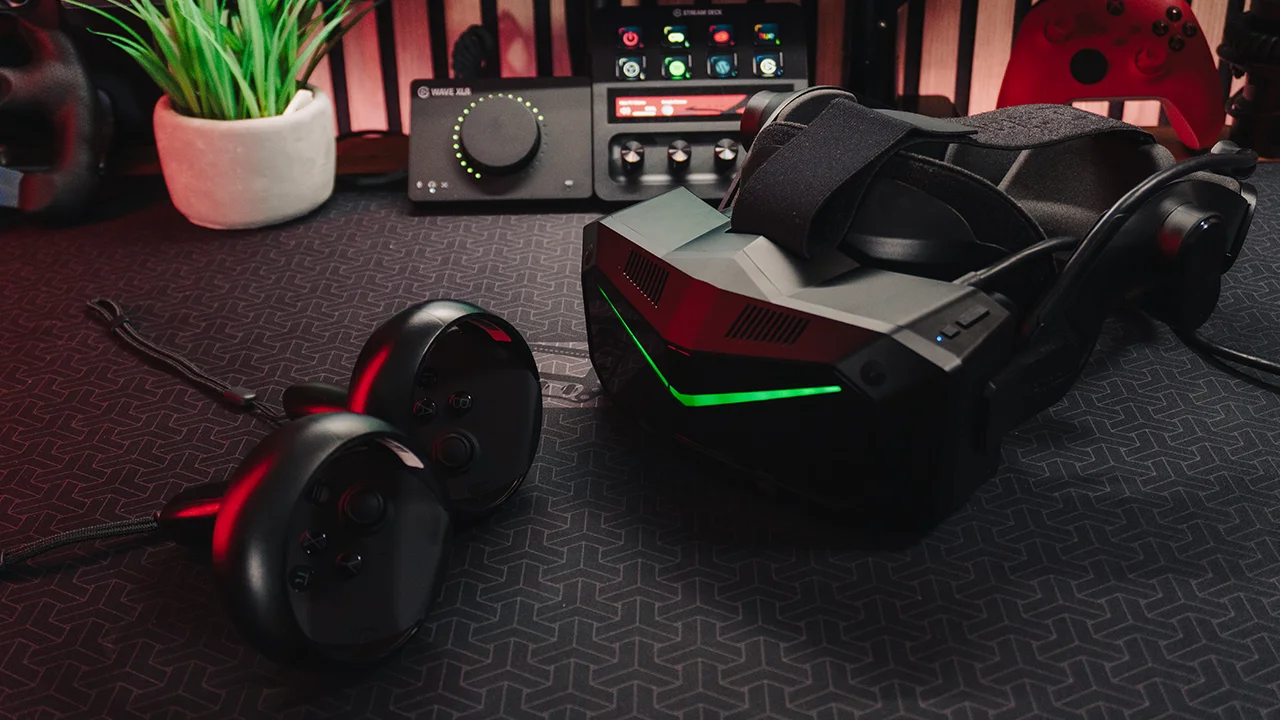
There is no denying that the Pimax Crystal Super is an absolute beast of a VR… Read More »Pimax Crystal Super VR Headset

| Cookie | Duration | Description |
|---|---|---|
| cookielawinfo-checkbox-analytics | 11 months | This cookie is set by GDPR Cookie Consent plugin. The cookie is used to store the user consent for the cookies in the category "Analytics". |
| cookielawinfo-checkbox-functional | 11 months | The cookie is set by GDPR cookie consent to record the user consent for the cookies in the category "Functional". |
| cookielawinfo-checkbox-necessary | 11 months | This cookie is set by GDPR Cookie Consent plugin. The cookies is used to store the user consent for the cookies in the category "Necessary". |
| cookielawinfo-checkbox-others | 11 months | This cookie is set by GDPR Cookie Consent plugin. The cookie is used to store the user consent for the cookies in the category "Other. |
| cookielawinfo-checkbox-performance | 11 months | This cookie is set by GDPR Cookie Consent plugin. The cookie is used to store the user consent for the cookies in the category "Performance". |
| viewed_cookie_policy | 11 months | The cookie is set by the GDPR Cookie Consent plugin and is used to store whether or not user has consented to the use of cookies. It does not store any personal data. |